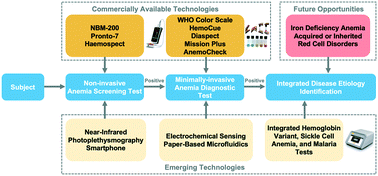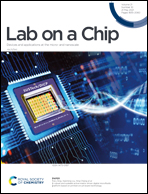Emerging point-of-care technologies for anemia detection
Abstract
Anemia, characterized by low blood hemoglobin level, affects about 25% of the world's population with the heaviest burden borne by women and children. Anemia leads to impaired cognitive development in children, as well as high morbidity and early mortality among sufferers. Anemia can be caused by nutritional deficiencies, oncologic treatments and diseases, and infections such as malaria, as well as inherited hemoglobin or red cell disorders. Effective treatments are available for anemia upon early detection and the treatment method is highly dependent on the cause of anemia. There is a need for point-of-care (POC) screening, early diagnosis, and monitoring of anemia, which is currently not widely accessible due to technical challenges and cost, especially in low- and middle-income countries where anemia is most prevalent. This review first introduces the evolution of anemia detection methods followed by their implementation in current commercially available POC anemia diagnostic devices. Then, emerging POC anemia detection technologies leveraging new methods are reviewed. Finally, we highlight the future trends of integrating anemia detection with the diagnosis of relevant underlying disorders to accurately identify specific root causes and to facilitate personalized treatment and care.

- This article is part of the themed collection: Microfluidics for hematology


 Please wait while we load your content...
Please wait while we load your content...